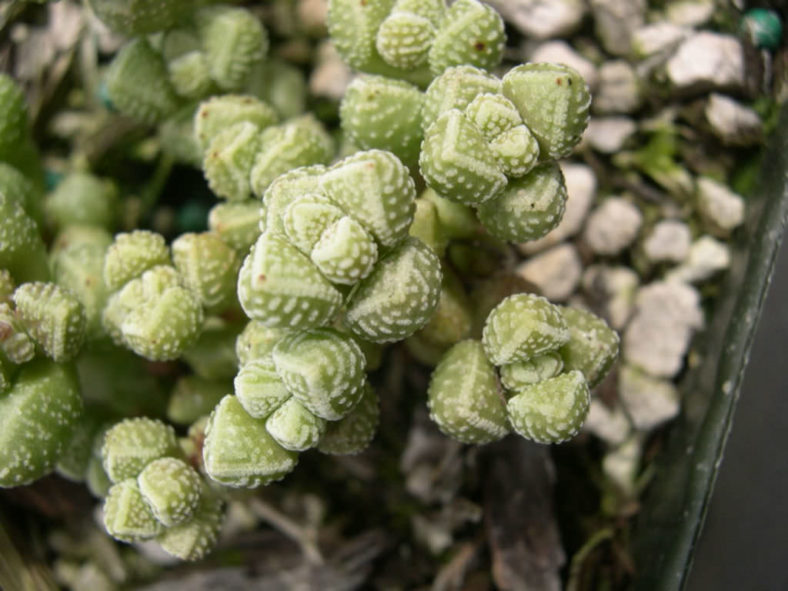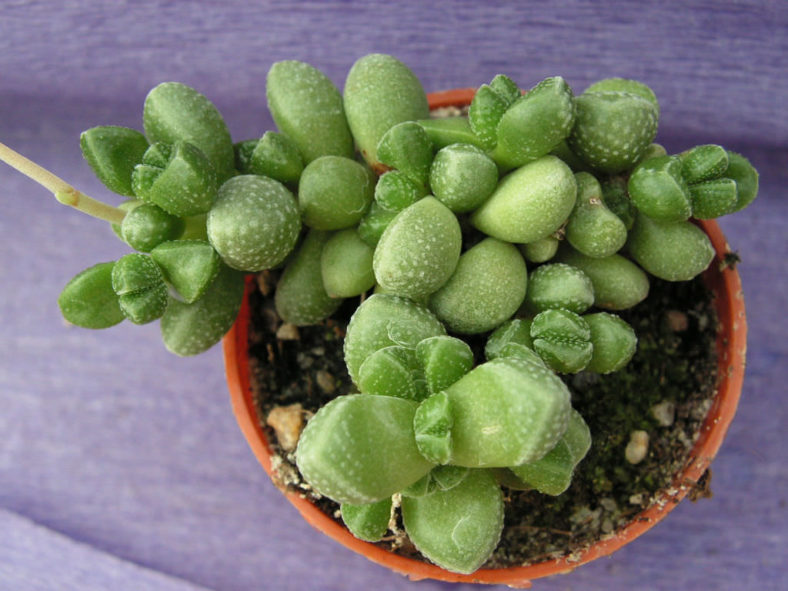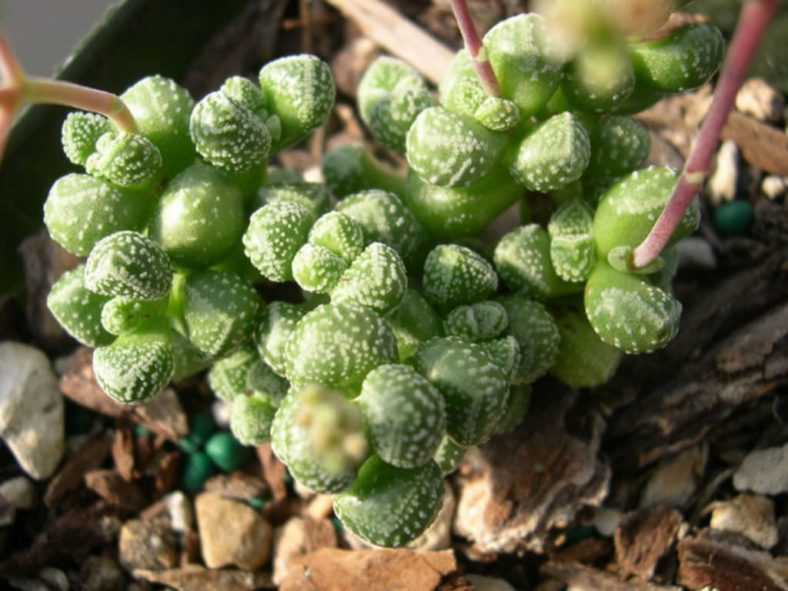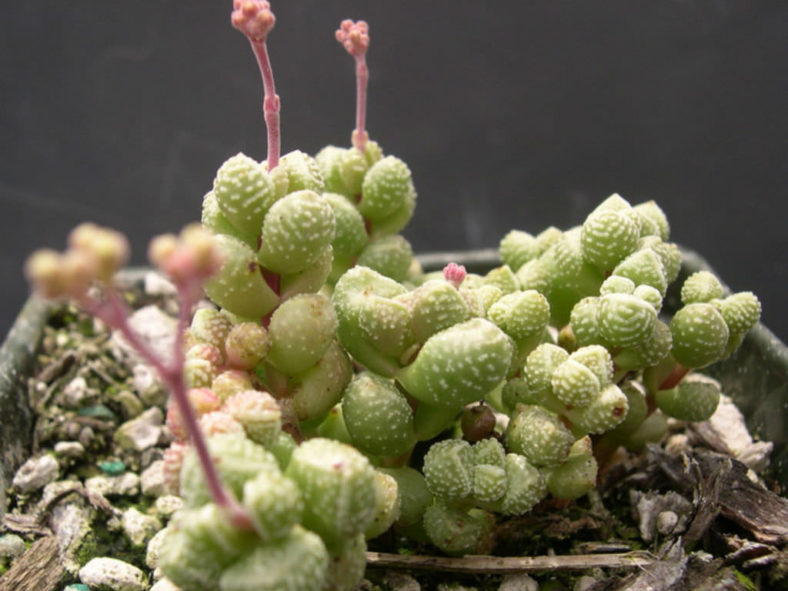Scientific Name
Crassula elegans subsp. namibensis (Friedr.) Toelken
Common Name(s)
Elegant Crassula
Synonym(s)
Crassula namibensis
Scientific Classification
Family: Crassulaceae
Subfamily: Crassuloideae
Genus: Crassula
Origin
Crassula elegans subsp. namibensis is native to southern Namibia. Some authors suggest that it should be treated as one of the forms of the very variable Crassula elegans.
Description
Crassula elegans subsp. namibensis is a small succulent with short, much-branched stems, fleshy or slightly woody at the base, and fleshy leaves tightly packed on the branches in opposite pairs. It can grow up to 3.2 inches (8 cm) tall. The leaves are ovate, broadly triangular in cross-section, measuring up to 0.6 inches (1.5 cm) long and 0.3 inches (8 mm) wide. They are green, becoming brownish red or deep red in full sun, and covered with coarse, rounded papillae.
Loose, rounded thyrses are produced at the tips of the branches with a peduncle covered with recurved hairs. The peduncle can grow up to 2.4 inches (6 cm) long. The tiny flowers are tubular, white, cream, beige, or yellowish, often fading to brown, and appear from fall to winter.

Hardiness
USDA hardiness zone 9b to 11b: from 25 °F (−3.9 °C) to 50 °F (+10 °C).
How to Grow and Care
Crassulas are easy to grow but susceptible to mealy bugs and fungal diseases. Overwatering is sure to be fatal, as with all succulents, so err on the side of too dry rather than too wet. Never let your Crassula sit in water. If you water from beneath by allowing the plant to sit in a saucer, ensure you pour off any excess water after a few minutes.
Crassulas are generally started by division, offsets, or leaf cuttings. Plants can be easily propagated from a single leaf: sprout leaves by placing them into a succulent or cacti mix, then covering the dish until they sprout.
Repot as needed, preferably during the warm season. To repot a succulent, ensure the soil is dry before repotting, then gently remove the pot. Knock away the old soil from the roots, removing any rotted or dead roots. Treat any cuts with a fungicide. Place the plant in its new pot and backfill it with potting soil, spreading the roots out as you repot. Leave the plant dry for a week or so, then begin to water lightly to reduce the risk of root rot.
See more at How to Grow and Care for Crassula.
Links
- Back to genus Crassula
- Succupedia: Browse succulents by Scientific Name, Common Name, Genus, Family, USDA Hardiness Zone, Origin, or cacti by Genus
Photo Gallery
Click on a photo to see a larger version.


